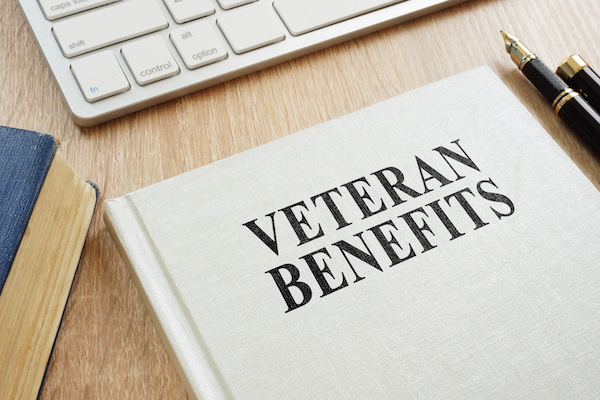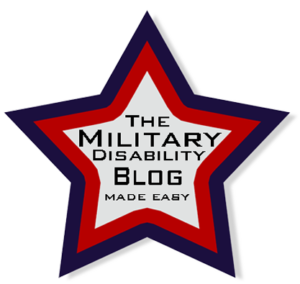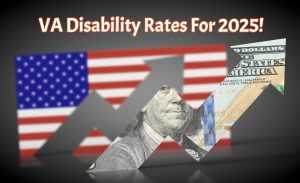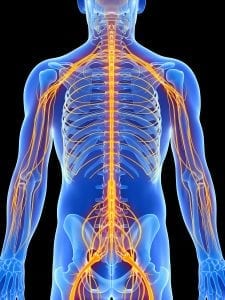Comprehensive List of Benefits for Veterans with Disabilities
- Published:
- Last Updated: October 30, 2024

Whether you are just starting to look into separation or you have already been a veteran for years, it may seem impossible to sort through all of the benefits that are available to you through the DoD and the VA.
How can you make sure you are getting everything for which you qualify?
Here is a list of all of the benefits offered by the DoD and the VA for veterans with disabilities. We give only a brief overview in this article, so follow the links for more in-depth discussions of each benefit.
DoD Benefits for Disabled Veterans
The DoD offers a few disability benefits, depending on where you are in the separation process.
If you are active duty, you may qualify for a medical discharge. This is the main disability benefit given by the DoD. To qualify for a medical discharge, you must have service-connected conditions that also make you Unfit for Duty. If the PEB finds that you have at least one condition that qualifies, then you will either be placed on TDRL, medically separated, or medically retired:
- Medical Separation. If you are rated 0%-20%, you will be medically separated with a single lump-sum payment.
- Medical Retirement. If you are rated 30% or more, you will be medically retired. Like with a regular retirement, you will receive a monthly payment for life and complete medical care.
If you are a veteran, the DoD offers options that could potentially increase your disability benefits, depending on your type of discharge.
For medical separations:
- The Physical Disability Board of Review (PDBR). If you were medically separated between 2001 and 2009, you may be eligible to apply to the PDBR to have your DoD rating updated to reflect the VASRD in effect at the time of your separation. The PDBR will never lower your rating, but they will increase it if the VASRD qualifies you for a higher rating. This has the potential to turn your medical separation into a medical retirement.
For retirements (regular and medical), your DoD compensation is decreased by your VA compensation unless you qualify for concurrent receipt (getting the full amount of both) through either of two programs:
- Combat Related Special Compensation (CRSC). CRSC allows some veterans with conditions incurred in combat or combat-related activities to qualify for concurrent receipt.
- Concurrent Retirement and Disability Pay (CRDP). CRDP allows some retirees rated 50% or more by the VA to qualify for concurrent receipt.
If you have an other-than-honorable discharge, you may qualify for a discharge upgrade, which would then make you eligible for benefits. You can check to see if you are eligible using the VA’s discharge upgrade tool.
VA Benefits for Disabled Veterans
Here is a comprehensive list of benefits offered by the VA. We’ll start with the disability-only ones, then discuss non-disability benefits, and finally benefits for spouses and children.
VA Disability Benefits
All Veterans with service-connected conditions can qualify for disability benefits from the VA.
- Disability Compensation. The VA offers a monthly payment for all service-connected conditions, depending on the veterans Total Combined Rating.
- Dependents. If you have dependents, you can claim them. This will increase your monthly disability amount.
- Health care. The VA provides full medical care for all service-connected conditions. Some veterans may even qualify for medical care for all of their conditions.
- Special Monthly Compensation (SMC). The VA offers various types of Special Monthly Compensation to veterans with certain combinations of conditions or circumstances that require additional care. The goal of SMC is to provide additional monetary compensation to veterans in circumstances where the regular benefits don’t fully cover the effects of their conditions.
- Aid and Attendance (A&A). A&A is a type of SMC for veterans who need daily assistance with the tasks of daily living. What many veterans don’t know is that A&A is also available for dependent spouses who require A&A.
- Permanent and Total Ratings (P&T). If you are rated 100% and it is medically assumed that your conditions will never improve, then the VA can make your rating permanent and total. This means that you will not have to have your conditions regularly re-evaluated, and your rating can never be decreased.
- Individual Unemployability (IU). Individual Unemployability allows a veteran rated less than 100% to be compensated at the 100% level because their conditions make them unemployable.
- Back Pay. Back Pay is a payment of all the money a veteran should have been receiving between their date of eligibility and the VA’s rating decision. The VA will also give Back Pay if there is a law change that entitles veterans to additional money for past periods of time, or if the veteran wins an appeal that qualifies them for additional money for past periods of time.
- Specially Adapted Housing (SAH)/Temporary Residence Adaptation (TRA). The VA offers grants to help veterans who need their houses adapted in order for them to live comfortably with their disabilities (like the loss of limbs or blindness). SAH is for permanent homes, and TRA is for temporary homes.
- Automobile Allowance and Adaptive Equipment. The VA offers grants to veterans whose conditions make it so they cannot drive without their car being adapted.
- Family Caregiver Benefits. The VA offers benefits for caregivers who are caring for veterans who are unable to care for themselves because of their service-connected conditions. These include education/training, counseling, a monthly stipend, healthcare, and more.
Other VA Benefits
The following benefits are available to all veterans through the VA.
- Education. For all veterans who qualify, the GI Bill will help pay for college, grad school, and other vocational training programs.
- Employment. The Veteran Readiness and Employment (VR&E) program helps veterans with service-connected conditions that interfere with their ability to work to discover employment options. For veterans who qualify, the VA also offers Personalized Career Planning and Guidance (PCPG).
- Small business support. The Vets First Verification Program provides various benefits to veteran-owned small businesses.
- Home loans. The VA offers various home loan options to help veterans buy, build, improve, or refinance a home.
- Life insurance. The VA offers various different life insurance options to qualifying veterans, including programs for terminally ill veterans.
- Burial and memorial benefits. Most veterans are eligible for burial benefits in a VA national cemetery.
VA Benefits for Spouses, Dependent Children, and Survivors
The following are available for qualifying spouses, dependent children, and survivors of veterans.
- Health care. Various health care options through CHAMPVA, Tricare, etc.
- Education benefits. Various scholarships and unused GI Bill benefits.
- Employment. Free educational and career counseling.
- Home loans. Surviving spouses may qualify for VA home loans.
- Life insurance. Various life insurance options.
- Burial. Spouses and dependent children may qualify for burial in a VA national cemetery.
- Survivors Pension. Financial support for survivors of wartime service veterans.
- VA Dependency and Indemnity Compensation (DIC). Survivors, including dependent parents, of service members who died in the line of duty or veterans who died from a service-connected condition may be eligible for financial support.
This is the comprehensive list of DoD and VA benefits available to disabled veterans. Additional benefits may be available through non-profit organizations and the like.
Recent Posts
TDRL vs. PDRL—Which is better for disability benefits?
Leukemias and Multiple Myelomas NOW on the Presumptive List
Two MORE Conditions added to the Burn Pit Presumptive List
The 2025 VA Disability Rates are here!
About Us









